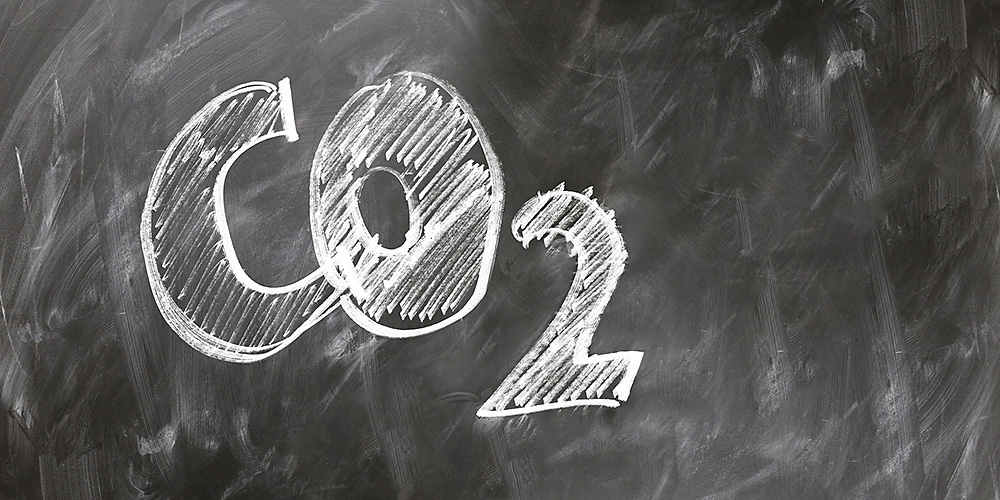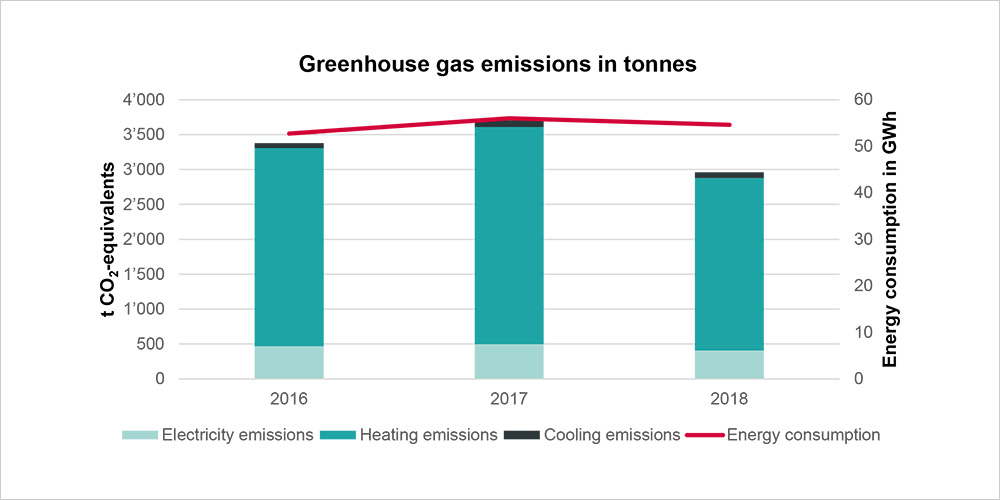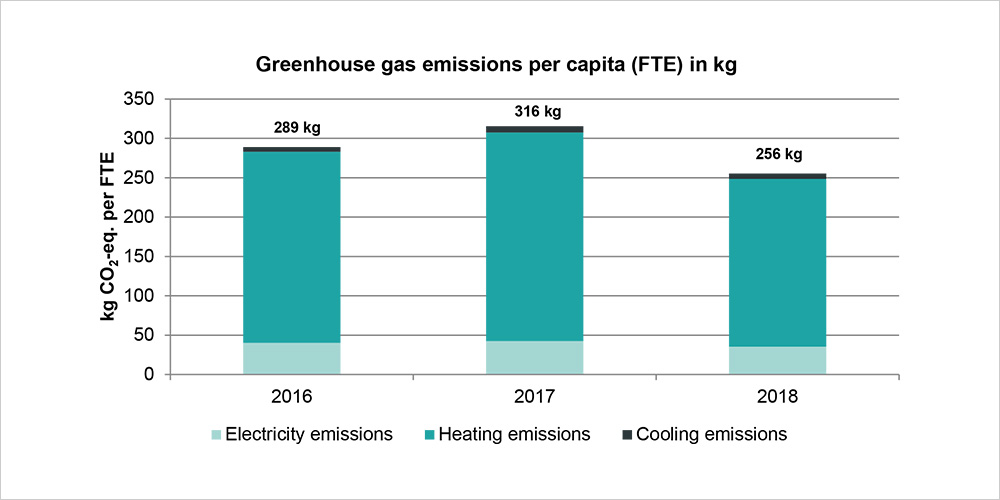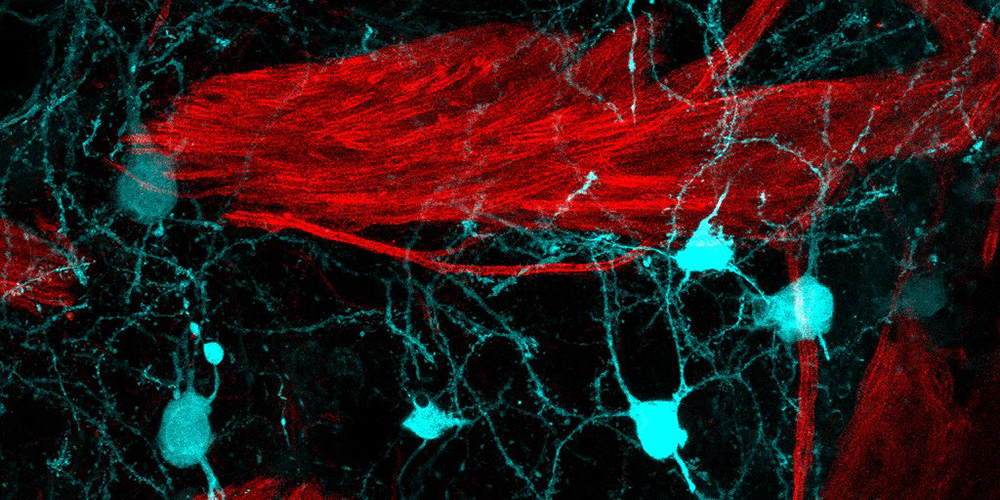CO2 footprint

In 2018, the University of Basel emitted 2,961 tonnes of atmospheric greenhouse gas through its energy consumption. This means that emissions levels were reduced by a good 20% over the previous year. For the first report, only greenhouse gas emissions for electricity, heat and cooling were calculated based on the data provided.
The reduction in emissions compared to 2017 can be attributed to a slight drop in energy consumption but also to a change in the mix of district heat and electricity in particular. Emissions dropped considerably more than total energy consumption, which fell by 2.5% during the same period. The main reason for the pronounced decrease in total emissions was a change in heat consumption. On the one hand, this is due to a drop in consumption (-10%) and, on the other hand, a more climate-friendly district heating mix. Compared to the previous year, emissions from heat consumption dropped from a total of 3,111 tonnes to 2,471 tonnes (-21%).
Despite an increase in electricity consumption (+5.9 %), the change to a new power supplier resulted in an additional emissions reduction of nearly 100 tonnes. This change was also accompanied by a change in the electricity mix: In 2017, 100% of the electricity mix came from Swiss renewable energy sources, whereas last year’s electricity mix was 94.2% foreign nuclear power, 5.5% domestic hydropower and 0.3% from other renewable energy sources (solar, wind and biomass).
Energy-related greenhouse emissions per university member[1] dropped from 316 kg in 2017 to 256 kg CO2-equivalents in 2018, which amounts to a decrease of 19%.
For the first report, only energy-related greenhouse gas emissions as well as emissions from catering were calculated based on the data provided. However, the greenhouse gas analyses of other universities shows that mobility constitutes a particularly large share of the CO2 footprint. For example, business trips in 2016 made up around 60% of total greenhouse gas emissions at ETH Zurich – 94% from air travel. A concept for monitoring university business trips is currently in development so that the CO2 footprint of air travel can be calculated in the future.
Greenhouse gas emissions from energy consumption according to the GHG Protocol
Greenhouse gas emissions were broken down into three “scopes”, as defined by the Greenhouse Gas Protocol (GHG Protocol). The direct energy-related emissions (Scope 1) include energy sources whose consumption is directly associated with greenhouse gas emissions on university property. This includes natural gas for heating and process gases used in research. In 2018, Scope 1 emissions made up 3.5% of total emissions at the university.
Indirect emissions play a bigger role at the University of Basel, making up 96.5% of emissions. On the one hand, these are caused by the external production of energy sources purchased in the form of electricity, heating and cooling (Scope 2). On the other hand, they are produced along the energy production chain (Scope 3), including emissions from upstream processes and losses in electricity, heat, or primary energy provision.
The following table lists energy-related greenhouse emissions for each scope, converted into tonnes of CO2 -equivalents.[2]
Scope 1 - direct emissions
(natural gas, process gas)
81
82
103
3.5 %
+ 24.9 %
+ 27.2 %
Scope 2 - indirect emissions: purchased energy
(electricity, heating, cooling)
1'689
1'861
1'428
48.2 %
- 23.3 %
- 15.4 %
Scope 3 - indirect emissions: energy supply
(natural gas, electricity, district heating, district cooling, process gas)
1'610
1'762
1'430
48.3 %
- 18.9 %
- 11.2 %
Total
3'380
3'705
2'961
100.0 %
- 20.1 %
- 12.4 %
[1] University members are the number of employees converted to full-time equivalents (100% = 1 FTE) as well as the number of students. Students are counted as 0.68 FTE.
[2] Calculations were performed according to the carbon accounting recommendations given by the «Koordinationskonferenz der Bau- und Liegenschaftsorgane der öffentlichen Bauherren» (KBOB), which is frequently used in Switzerland.




